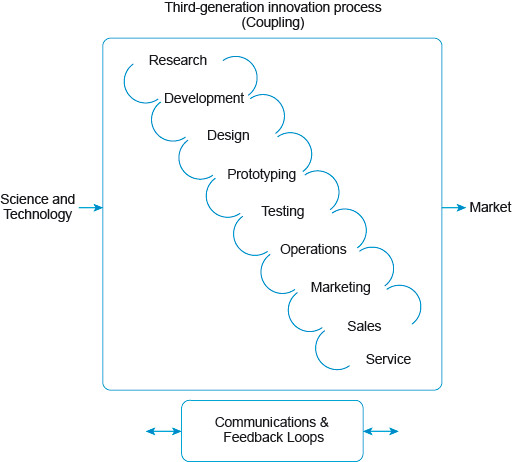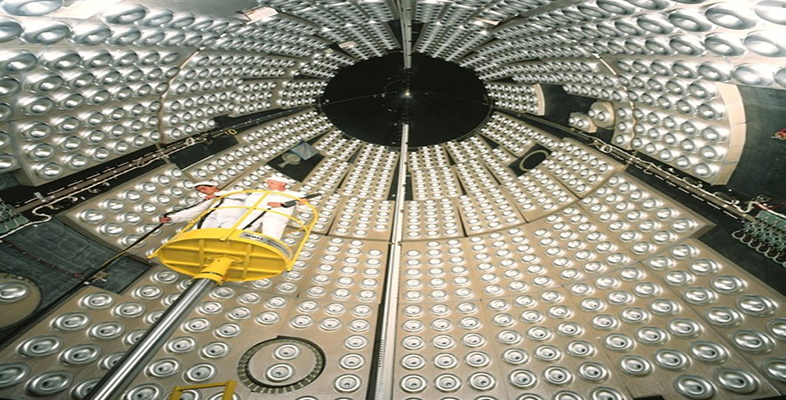5.5 Third-generation innovation
The technology push and market pull models of technological change and innovation offer simple – and therefore attractive – explanations of the innovation process with only a partial explanation of the mechanisms or drivers that are significant for innovation. Indeed, following the publication of a wide range of empirical studies of innovation in the mid to late 1970s, it was argued by Mowery and Rosenberg in 1978 that:
Essentially, these empirical results indicated that the technology push and need [demand] pull models of innovation were extreme and atypical examples of a more general process of interaction between, on the one hand, technological capabilities and on the other, market needs.
As a result a ‘third-generation’ model of innovation was proposed. In Figure 4 this model ‘couples’ together a range of functions, activities and ‘communication paths’:
The emphasis in this model is on the feedback effects between downstream and upstream phases of the earlier linear models. The stages in the process are seen as separate but interactive. The management challenge of this process involves significant investment in cross-organisational communications and integration.

